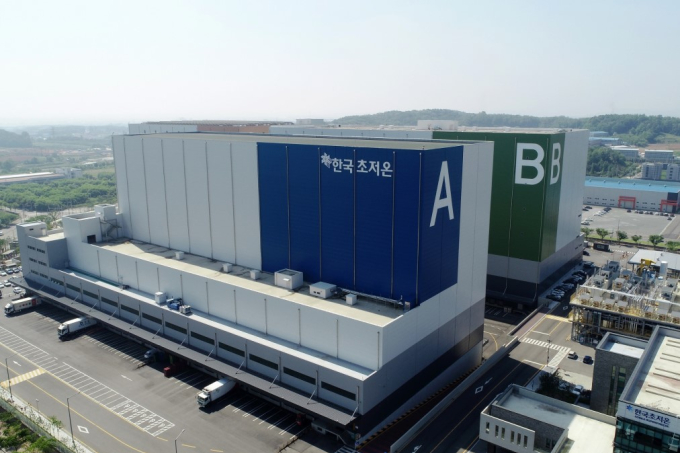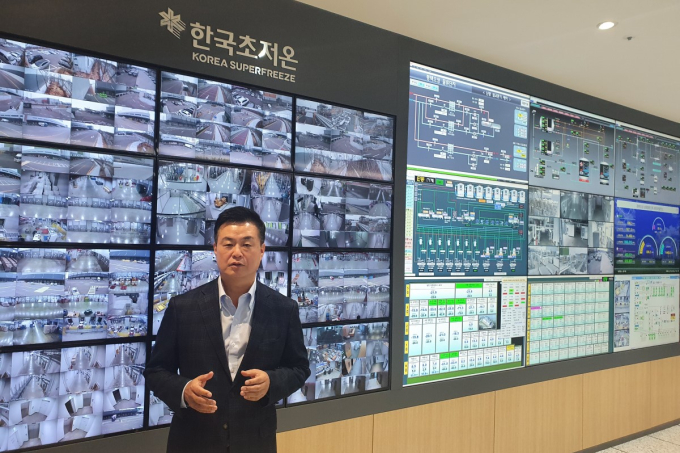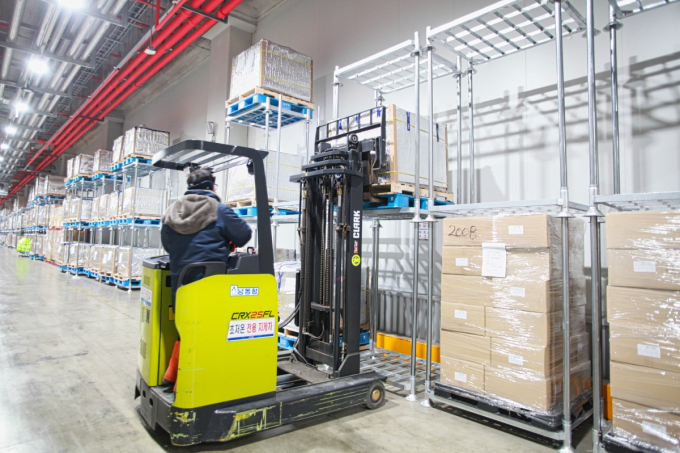COVID-19 vaccines
Korea Superfreeze readies for mass COVID-19 vaccine storage
By Dec 14, 2020 (Gmt+09:00)
2
Min read
Most Read
LG Chem to sell water filter business to Glenwood PE for $692 million


KT&G eyes overseas M&A after rejecting activist fund's offer


Kyobo Life poised to buy Japan’s SBI Group-owned savings bank


StockX in merger talks with Naver’s online reseller Kream


Meritz backs half of ex-manager’s $210 mn hedge fund



It's a busy day at the Korea Superfreeze warehouse in South Korea's Gyeonggi province, with trucks entering and exiting the spacious 92,500-square-meter logistics center via a private deck that maintains freezing temperatures during the loading and unloading process.
Korea Superfreeze is hard at work in its preparation to store COVID-19 vaccines. It is the only company in the country with the technology and resources to handle the widespread storage of vaccines that need to be kept at 70 degrees Celsius below zero.
"Our warehouse can store vaccines at minus 85 degrees Celsius all year round. We’re ready to receive COVID-19 vaccines from Moderna, Pfizer and BioNTech,” said Kim Jin-ha, the chief executive of Korea Superfreeze, in an interview with The Korea Economic Daily on Dec. 14.

The cryogenic logistics business has three different buildings in which to store room temperature items, refrigerated products and frozen goods. In particular, the super-cold storage has garnered attention thanks to its offering of three large, ultra-low temperature rooms that can hold around 75 million vaccines.
Korea Superfreeze offers space for global pharma vaccines that require different temperature settings. For example, Pfizer and BioNTech vaccines need to be stored at 70 degrees below zero, Moderna vaccines need to be kept at minus 20 degrees Celsius, while AstraZeneca vaccines can be stored at two to six degrees above zero.
Pfizer and BioNTech vaccines are expected to be delivered in a special container from Michigan, in the US. The vaccines can be stored up to 10 days at ultra-low temperatures. When they arrive in Korea, the vaccines will be removed from the special container, stored for some time at Korea Superfreeze, and distributed to various medical facilities.
“Under strict control and delivery tactics, we will distribute vaccines from the logistics center to around 260 vaccination sites, including large hospitals and public health centers,” Kim said.
The cold-chain logistics center is working to construct an exclusive elevator and pathway to store and transport COVID-19 vaccines.

Founded by global private equity firm EMP Belstar in 2014, Korea Superfreeze was the first company in the country to use cold energy extracted from liquefied natural gas (LNG) frozen at minus 162 degrees to refrigerate vast storage warehouses.
According to Kim, using LNG instead of electricity can save up to 70% on electricity costs.
“Refrigeration or freezing methods powered by electricity can only lower the temperature to 60 degrees below zero. The risk of unstable temperatures and costly maintenance fees have shifted attention to the LNG method,” said Kim.
Korea Superfreeze has been communicating closely with the government to discuss yearly costs for ultra-low temperature storage. The company is also in talks with distribution companies that own cold storage vehicles.
Once the COVID-19 vaccine is available, SK Holdings Co. is expected to be a key beneficiary as the second-largest shareholder of the cryogenic logistics company with a 20% stake.
Korea Superfreeze posted 166.4 billion won ($15 million) in revenue last year.
Write to Woo-sub Kim at duter@hankyung.com
Danbee Lee edited this article.
More to Read
-
 Fund inflowsGlobal funds flow into S.Korea as investors look to life after COVID-19
Fund inflowsGlobal funds flow into S.Korea as investors look to life after COVID-19Nov 25, 2020 (Gmt+09:00)
2 Min read -
 Cold-chain logisticsSK Holdings cryogenic biz eyes jackpot on hopes of imminent COVID-19 vaccine
Cold-chain logisticsSK Holdings cryogenic biz eyes jackpot on hopes of imminent COVID-19 vaccineNov 13, 2020 (Gmt+09:00)
2 Min read -
 COVID-19 test kit maker Seegen flags more than 30-fold rise in Q2 OP
COVID-19 test kit maker Seegen flags more than 30-fold rise in Q2 OPAug 13, 2020 (Gmt+09:00)
2 Min read -
 SK Bioscience wins COVID-19 vaccine manufacturing order from US firm
SK Bioscience wins COVID-19 vaccine manufacturing order from US firmAug 14, 2020 (Gmt+09:00)
2 Min read
Comment 0
LOG IN


